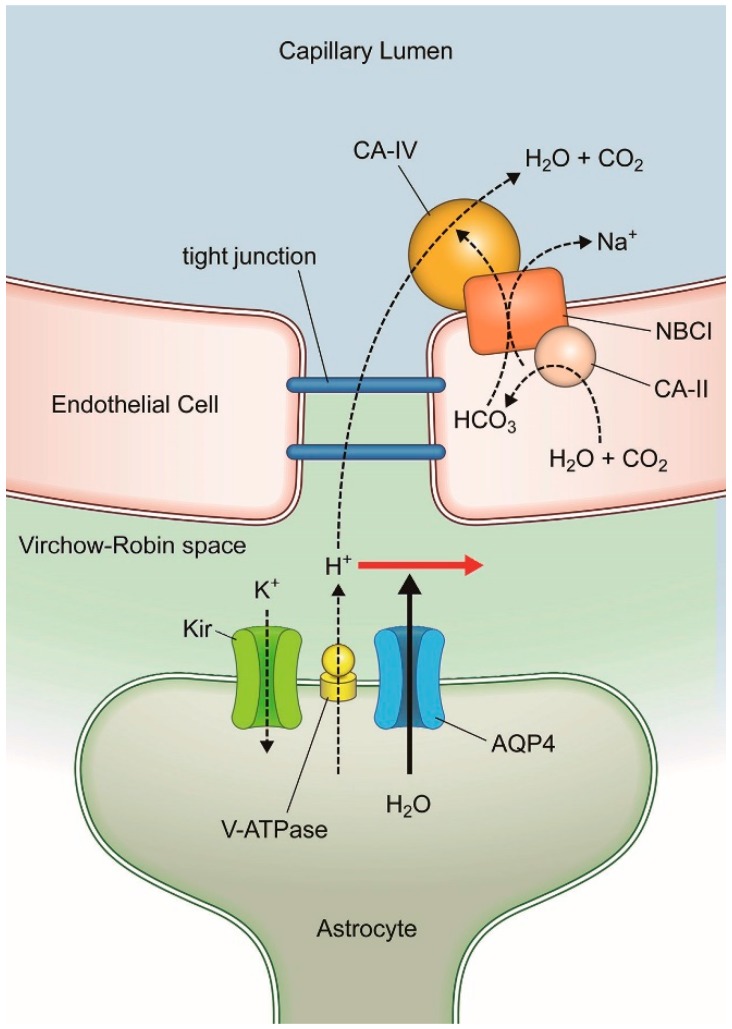Figure 4.
Molecular processes within the Virchow–Robin space associated with neural activation. Neural activation induces potassium efflux into the interstitial space which is quickly scavenged by inwardly rectifying potassium channel (Kir). This potassium spatial buffering promotes release of a counterpart cation, H+, by vacuolar ATPase, resulting in proton excess in the interstitial fluid (extracellular acidosis). AQP-4 is inhibited by higher proton density (red arrow). Excess protons move into the intracapillary space without significant resistance at the tight junctions because of the Grotthuss proton tunneling mechanism. Carbonic anhydrase type IV (CA-IV) anchored to the luminal surface of capillaries and NBC1 sodium bicarbonate co-transporter that interacts directly with CA-IV effectively scavenge these excess protons. Modified from Reference [9].

